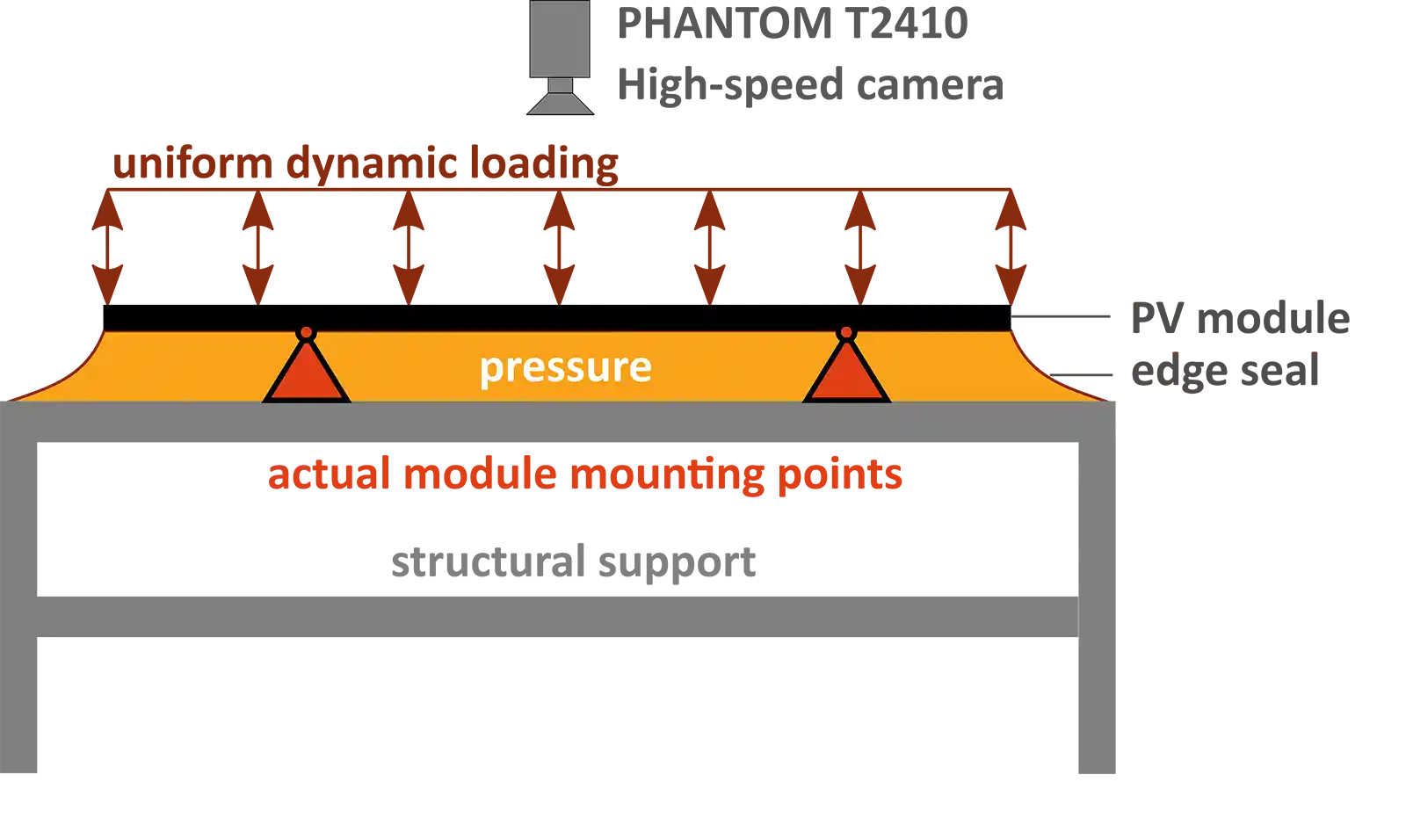Forecasting Glass Resilience of Large-Format PV Modules
DuraMAT will assess the implications of large-format photovoltaic (PV) module designs on module resilience by establishing the necessary framework and tools to predict the probability of low-energy glass fracture and avoid glass breakage in future PV module designs.
The increasing size of large-format PV modules and their use of thinner glass have introduced challenges in module durability, particularly a rise in glass breakage incidents. Modern modules, 40%–60% larger than previous generations, often feature 2-mm heat-strengthened glass instead of fully tempered 3.2-mm glass, smaller frames, and, therefore, reduced structural rigidity. These design changes, coupled with nonideal mounting configurations and reductions in testing loads, have led to higher susceptibility to module glass breakage under operational conditions.
To address these issues, this study employs probabilistic fracture mechanics and experimental characterization of full-size modules. Static and dynamic mechanical load testing frameworks have been designed to evaluate the impacts of glass thickness, heat treatment, and module architecture on fracture risk. High-speed imaging is used to identify strength-limiting flaws and crack propagation dynamics. Additionally, dynamic mechanical testing is used to simulate real-world loading conditions, investigating the role of edge defects caused by frame/glass interactions. The findings aim to establish relationships between module design parameters and glass breakage probability, offering insights to improve module durability. This research highlights the need for better process control, quality assurance, and comprehensive testing to ensure the structural resilience of next-generation PV modules.
Core Objective
Disruptive Acceleration Science
Team Members
Martin Springer, Tim Silverman, and Nick Bosco at the National Renewable Energy Laboratory (NREL)
Impact
This research provides a framework for assessing and mitigating the risks of glass breakage in large-format PV modules, enabling manufacturers to optimize designs for durability and reliability. By incorporating probabilistic fracture mechanics and experimental testing, the work identifies critical design parameters—such as glass thickness, heat treatment, quality assurance, and mounting configuration—that influence fracture probability. Addressing these factors supports the DuraMAT goal of achieving 50-year module lifetimes by improving the structural resilience and reducing the failure rates of PV modules under real-world conditions.
Learn More
Springer, Martin, Tim Silverman, and Nick Bosco. 2024. “Forecasting Glass Resilience of Large Format Modules.” Poster presented at the 2024 PV Reliability Workshop. Page 39.
Contact
To learn more about this project, contact Martin Springer, NREL.

Dynamic mechanical test setup to introduce and image low-energy glass fracture in large-format PV modules.